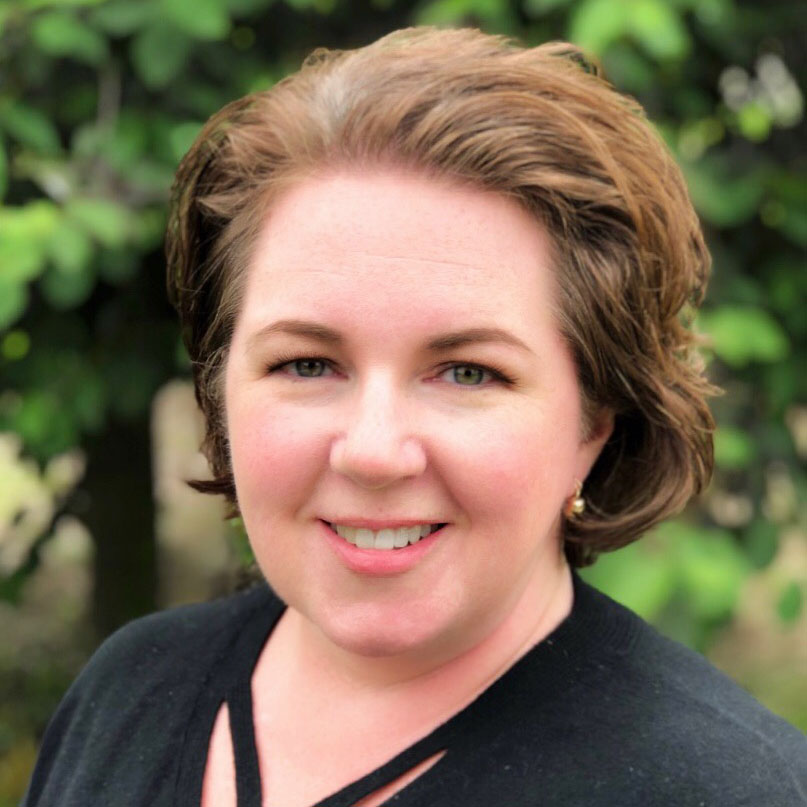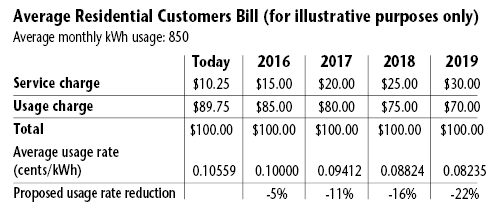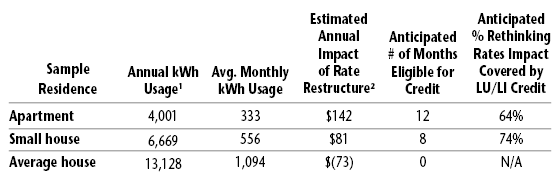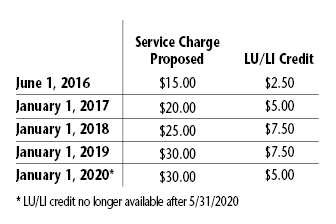Straight talk about restructuring rates

You may have heard the Omaha Public Power District proposed a “341 percent” increase in its “fixed rate.”
We’d like to clear up some misconceptions about the proposed rate restructuring and discuss a new program that will help low-income customers who also use low amounts of energy.
First, why we’re doing it
Simply put, making these changes to the bill structure now allows OPPD to build a better pricing foundation to embrace the developments and changes facing the energy industry. The longer we wait to make this type of change, the more consumers may make decisions based on a rate structure that has become outdated. OPPD can either lead or follow. However, our mission is to “lead the way we power the future.”
For months, OPPD leadership has been discussing with and listening to customers, many of whom are concerned about the impact of the rate restructuring on low-income and low-use customers. We share these concerns. On Dec. 17, they introduced a program that will help qualifying customers with the transition to the new bill structure as well as decrease the proposed service charge by 15 percent, to $30 by 2019. The OPPD Board of Directors approved implementing the plan on a 6-2 vote at their December meeting. The board also approved a four percent general rate increase for 2016.
Let’s look at the assertions individually
Assertion: The “fixed rate” will be raised by “341 percent” over the next four years.
Fact: The restructuring plan raises the service charge while lowering the per-kWh usage rate. All customers, regardless of income, will pay the same service charge and per-kWh usage rate. This is so that all customers more equally share in the costs of providing service. These costs have two components: fixed costs and variable costs. OPPD’s fixed costs include things such as infrastructure and equipment, in short, how power gets to you. The graphic below shows how a bill of $100 per month (the average for all residential customers) would be redistributed under the proposal.
As you can see, a customer with a monthly bill of $100 would actually see a 22 percent reduction in their usage charge by 2019, and see no increase in their overall total bill.
Assertion: The proposal penalizes low-income customers, who are typically low energy users.
Fact: Not all low-income customers are also low users. For those customers who are both, their bill will increase over the course of the next three years by an average of $9 per month. Low-income/low user customers account for about 60 percent of OPPD’s low-income customers. This number is before any new program credits are applied. Low-income customers who use the average amount of electricity, or about 25 percent of OPPD low-income customers, will see no increase by 2019. For low-income customers who are high energy users, about 15 percent of OPPD low-income customers, their bills will decrease an average of $18 by 2019.
The Residential Low Usage/Low Income Customer Program helps qualifying low-income customers adjust to the new billing structure. Customers who qualify must use less than 600 kilowatt hours per month and be enrolled in the Low Income Home Energy Assistance Program (LIHEAP). That program requires household income (including expenses) to be at 130 percent of the poverty level.
For those who qualify, a $2.50-per-month credit will be offered beginning June 1, 2016. The credit rises to $7.50 per month by Jan. 1, 2019. The low-usage customer who will experience an average $9/month increase by 2019 will actually only be seeing a $1.50/month increase that year under this program.
Approximately 15 percent of OPPD’s low-income customers would be ineligible for monthly credits. Eighteen percent would receive credits during all 12 month of the year. The average low-income customer would receive credits for six months of the year.
Assertion: The proposal discourages energy efficiency.
Fact: It does not. OPPD remains committed to promoting and educating customers about how they can save energy and improve efficiency. Under the restructuring plan, the average customer will still have control over about 70 percent of their bill. This portion is based on usage.

Laura King-Homan is the manager of Corporate Brand and Communication Operations, at Omaha Public Power District. She has nearly 20 years of print journalism and design experience, including the Omaha World-Herald.
View all posts by Laura King-Homan >










